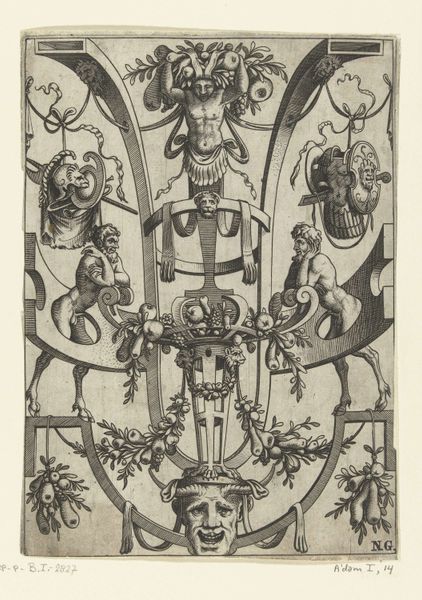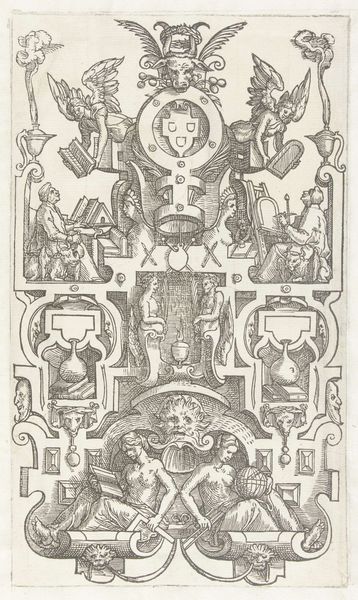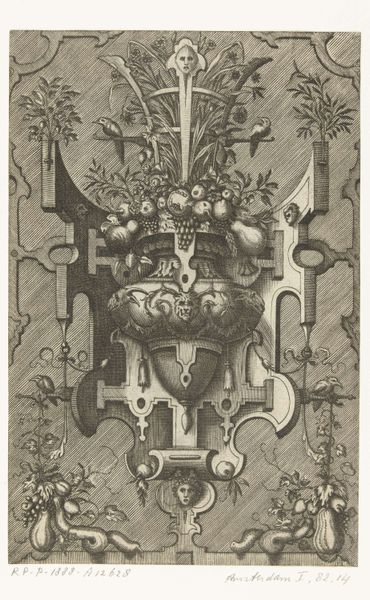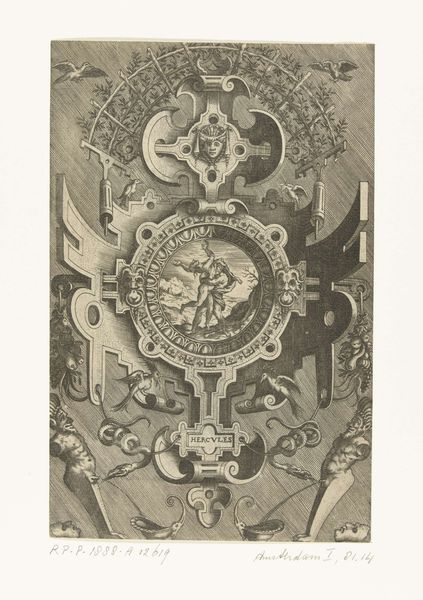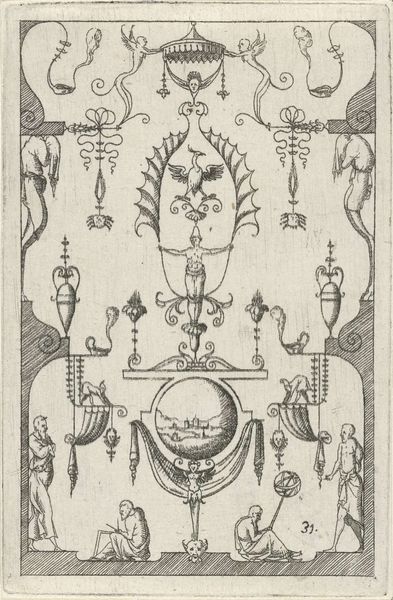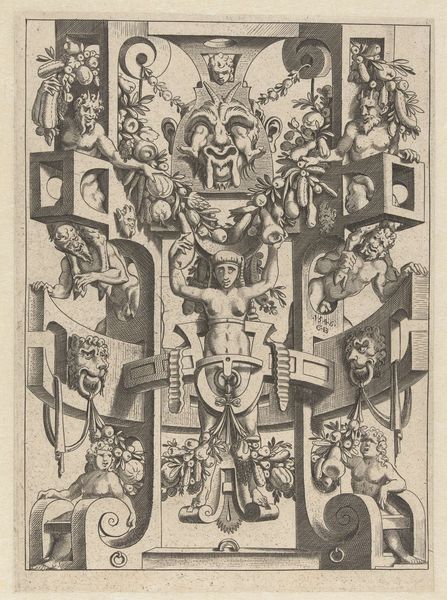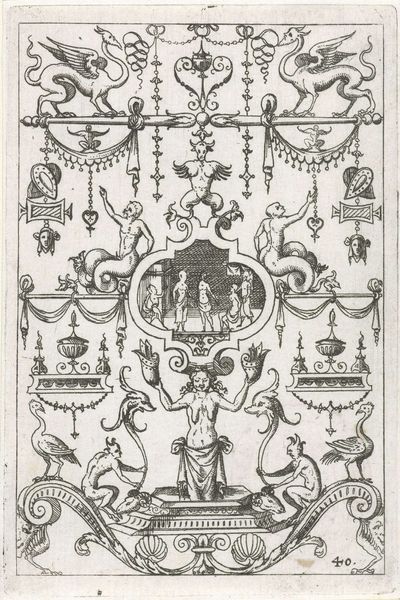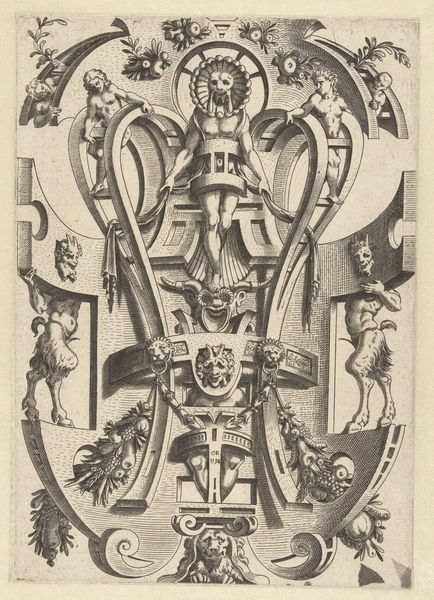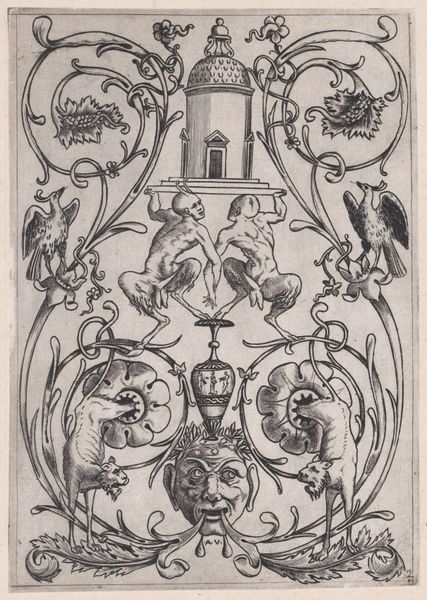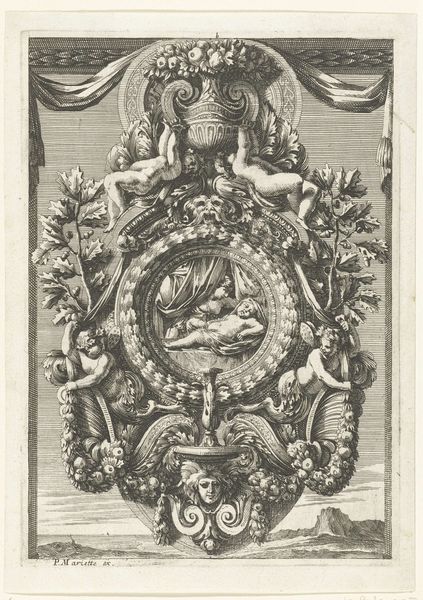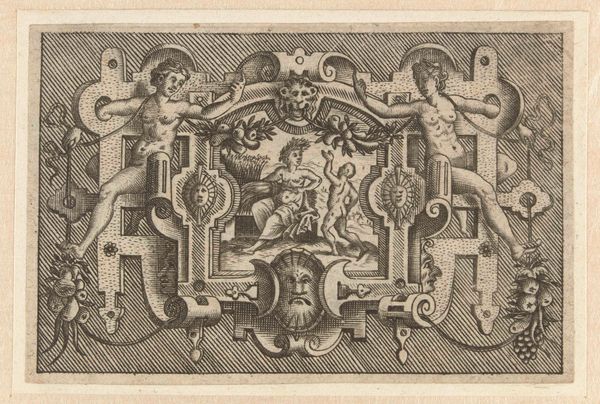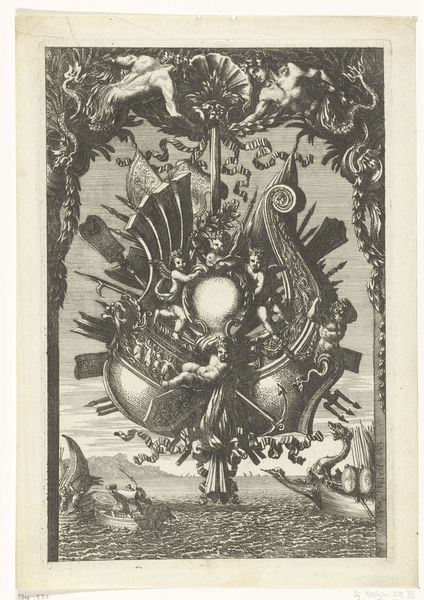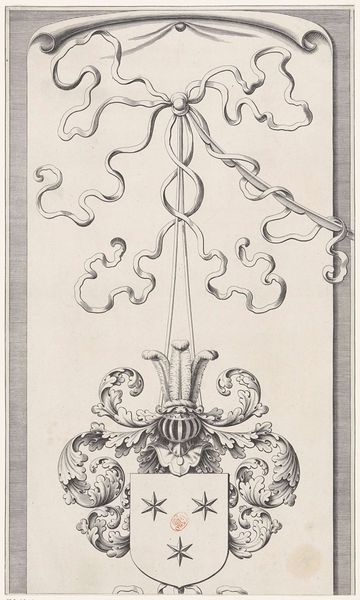
Twee cartouches boven elkaar, de bovenste bevat het hoofd van een vrouw 1567
0:00
0:00
Dimensions: height 204 mm, width 136 mm
Copyright: Rijks Museum: Open Domain
Pieter van der Heyden created this print, held at the Rijksmuseum, during the 16th century. The two cartouches overflow with symbolic elements, a mirror to the Renaissance fascination with antiquity and its visual language. Notice the woman's head in the upper cartouche, flanked by serpentine figures. Such medusa-like visages, often representing powerful feminine forces, can be traced back to ancient Greek and Roman art. The motif re-emerges throughout the ages, a potent symbol both of protection and of the fearsome aspects of female power. Similarly, the lower cartouche depicts a man battling a serpent, an echo of heroic narratives like Hercules fighting the Hydra. These symbols are not static; their meanings shift. The serpent, for instance, has represented both healing and temptation. What is it about these enduring images that speaks to our collective psyche, prompting artists to revisit and rework them, imbuing them with new significance across generations? We are left pondering the cyclical nature of symbols, forever transformed and revived.
Comments
No comments
Be the first to comment and join the conversation on the ultimate creative platform.
